What is SCTLD?
Stony Coral Tissue Loss Disease (SCTLD, pronounced “skittle’) is a disease of corals that first appeared off the southeast coast of Florida in 2014. By 2019 it had spread along the Florida Keys and had appeared elsewhere in the Caribbean Sea.
The disease destroys the soft tissue of at least 22 species of reef-building corals, killing them within weeks or months of becoming infected. The causal agent is unknown but is suspected to be a bacterium, although more recent studies suggest a virus. The degree of susceptibility of a coral, the symptoms, and the rate of progression of the disease vary between species. Due to its rapid spread, high mortality rate, and lack of subsidence, it has been regarded as the deadliest coral disease ever recorded, with wide-ranging implications for the biodiversity of Caribbean coral reefs.
SCTLD in Dominica
The disease arrived in Dominica in 2021 at the northern dive sites around Portsmouth. It then traveled south to our dive sites here in the Soufriere Scotts Head Marine Reserve (SSMR), arriving in early 2022. We knew that it was coming, so we were able to prepare to the best of our abilities: fighting this intrusion takes both financial resources and a lot of manpower, two things that were in short supply!
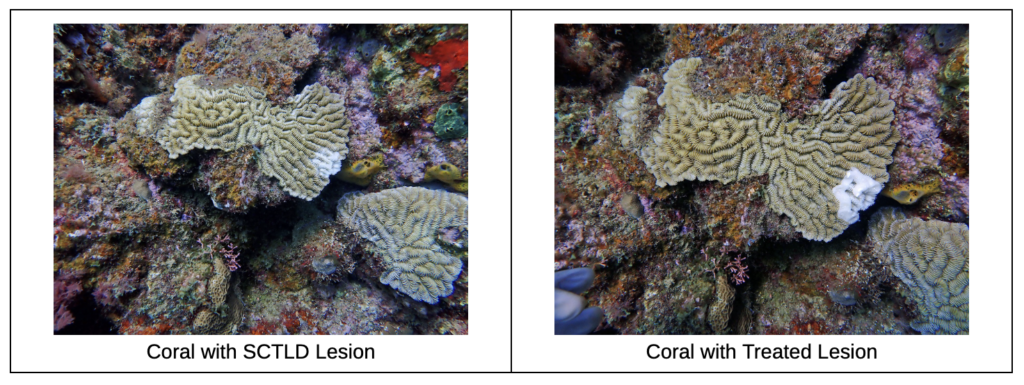
Fighting SCTLD
The only successful intervention method currently known for SCTLD is to administer the antibiotic amoxicillin mixed with a marine-safe epoxy to the coral via a syringe. Treated corals are then monitored and re-treated as needed.
SCTLD Intervention at Nature Island Dive
We have been on the forefront of this battle and have taken the following initiatives to help fight against SCTLD and save our Stony Coral.
Treatment
The treatment is mixed here in the shop on a daily basis and our divemasters carry a few syringes with them on every dive. If conditions permit, we will treat some corals on every dive. In addition, we have a small volunteer group who apply treatment to affected corals on a daily basis.
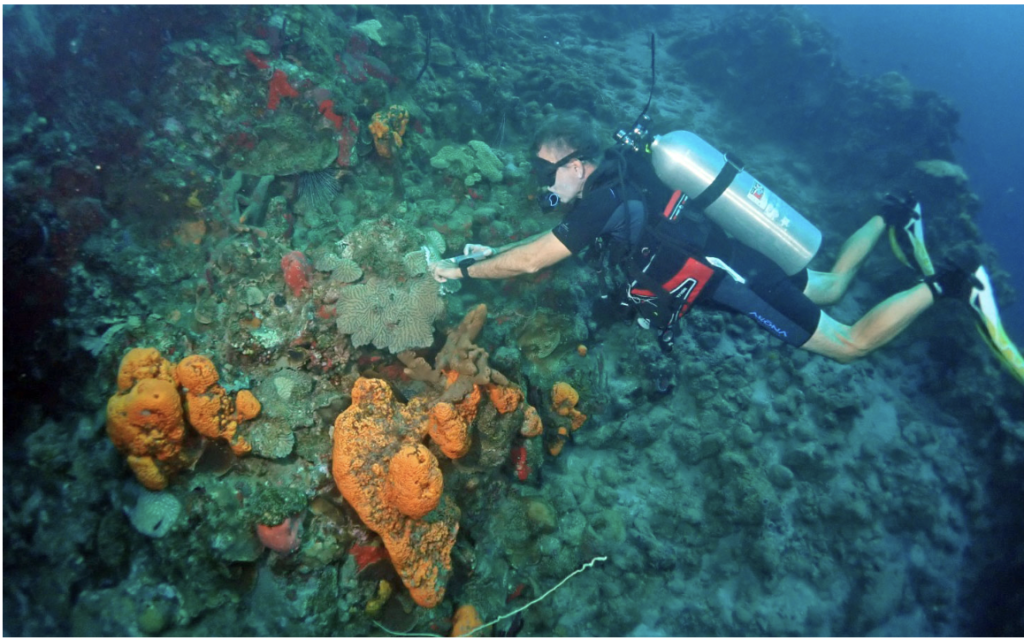
Monitoring
Prior to SCTLD’s arrival, we performed many coral surveys to document pre-disease conditions. We also tagged corals considered ‘iconic’ due to their unique size or species. The conditions of all tagged corals are noted and reported when they are encountered during dives. At one dive site we are documenting every coral treated and compiling data on the effectiveness of our efforts.
Future Re-propagation
We are assembling ‘coral trees’ and placing them in areas we hope to be relatively free of SCTLD. Small pieces of various species of coral are then raised on plates attached to the branches of the trees. The long term goal of this effort is to have living examples of coral that can be re-planted on the reefs.
- Tree in the Sea!
Reef Preservation – The Ark
There is an area close to the dive shop which is cared for by a small volunteer group, which we fondly call ‘The Ark.’ The volunteers swim to the reef daily, or as needed, treating every observed, affected coral.
We are happy to say that to date (December 2022) results of this group’s efforts indicate that there are many more living corals on this reef than at other sites that are monitored and cared for on such a regular basis.
The hope is that by keeping these hard corals alive, they can reproduce and eventually be used to re-populate the region.
Throughout our interaction with this disease, we have been collecting data, conducting surveys, and taking photographs. We are currently in the process of creating a database with all f this information which can then be used for further scientific research.
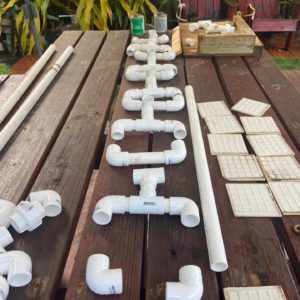
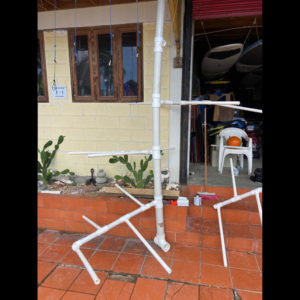
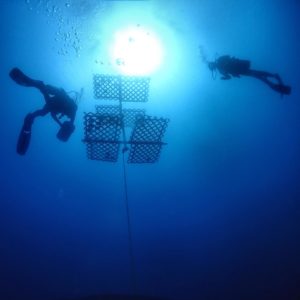
Recent Comments